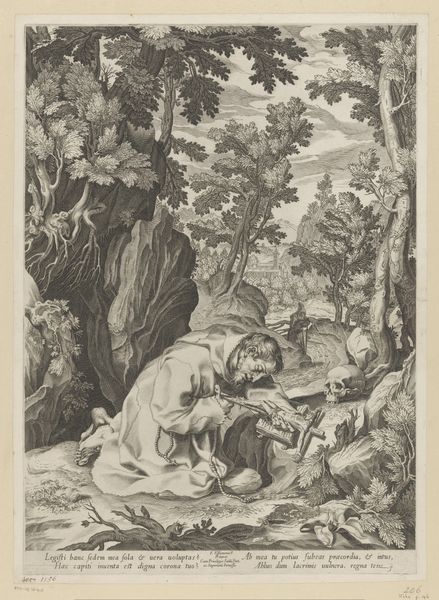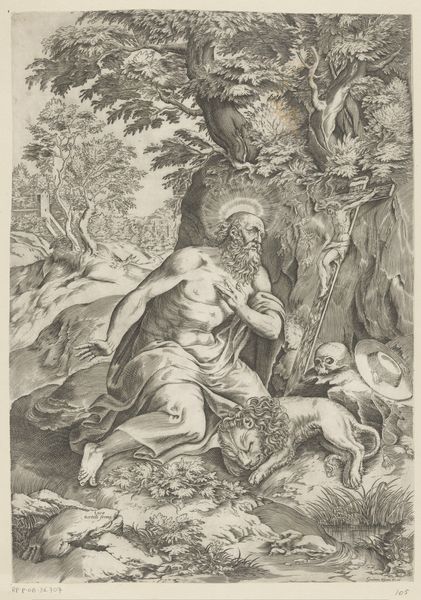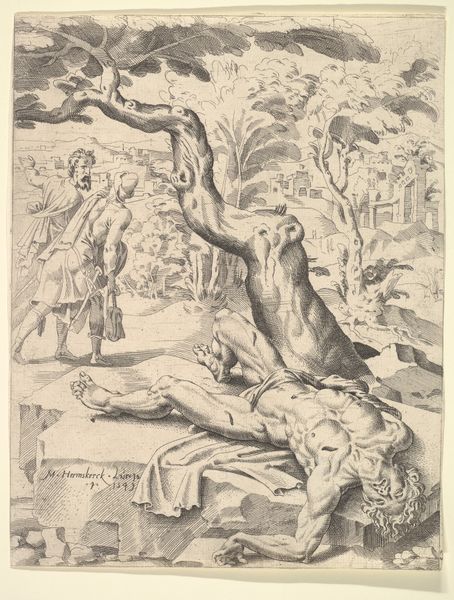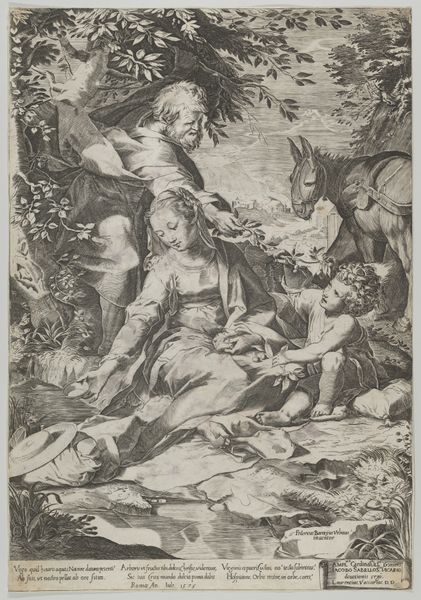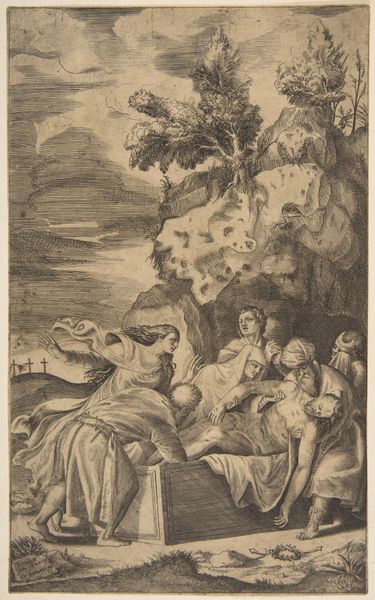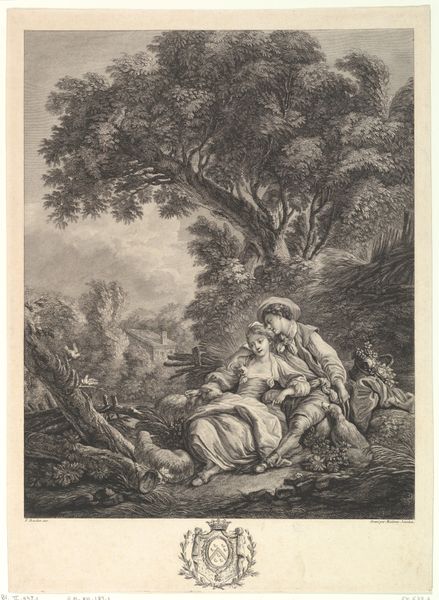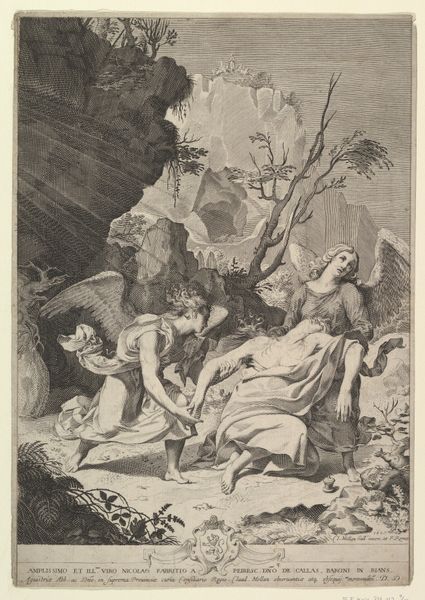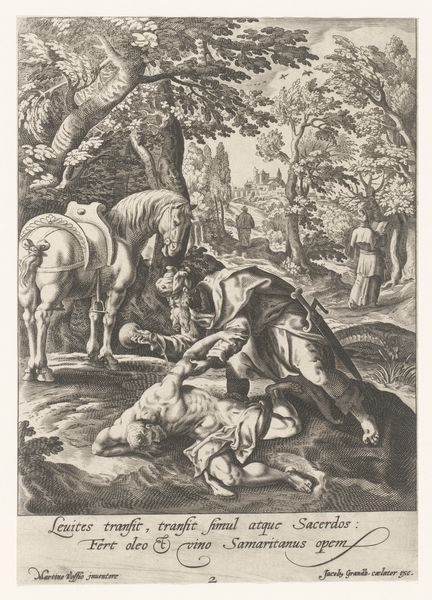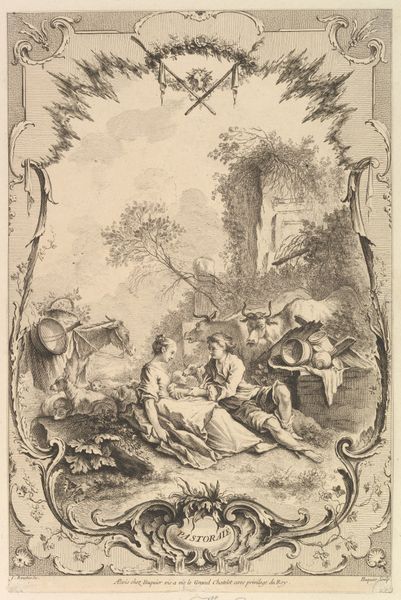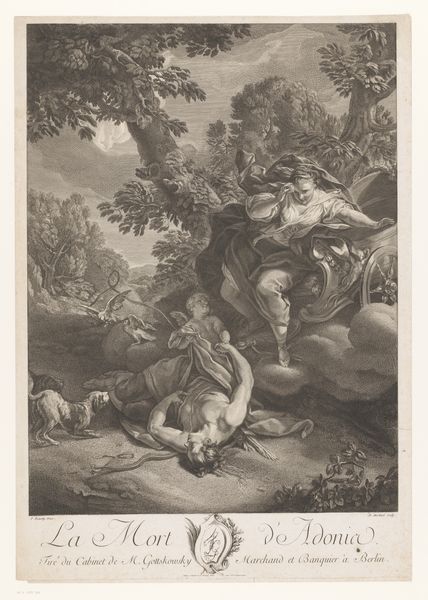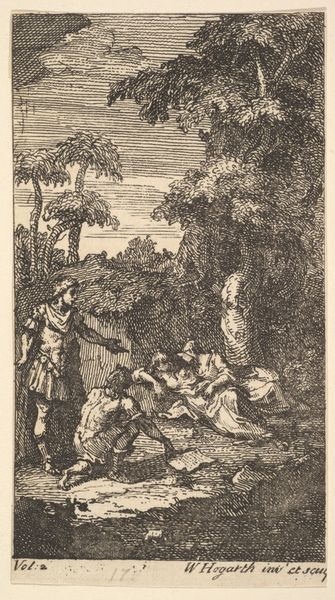
drawing, print, ink
#
portrait
#
drawing
#
ink drawing
#
narrative-art
#
baroque
# print
#
landscape
#
figuration
#
ink
#
history-painting
Copyright: Public Domain
Curator: Here we have Gerard Hoet's "Moses and the Burning Bush," an ink drawing created sometime between 1660 and 1733. Editor: It strikes me as very baroque, a scene of both serenity and dramatic tension, rendered with a delicate touch. The contrast between the angel in swirling drapery and Moses weighed down and barefoot... very powerful. Curator: Indeed, and think about the labor involved in creating this print. The skilled hand meticulously laying down lines to create depth and form. Hoet, a master draftsman, also operated a workshop that produced a considerable amount of drawings and engravings. How might that have shaped his artistic practice, its standardization, and division of labor? Editor: Absolutely. Seeing Moses as the grounding force kneeling, seemingly resistant to this vision of God's calling really captures the feeling of bearing the weight of leadership and societal change during turbulent times. I think about today and the relevance this narrative can bring regarding community involvement and what bearing witness really means when it comes to demanding liberation. Curator: Looking at the materiality, the precise ink lines build not just an image but a tangible record of the engraver’s time and skill, also speaking to print culture's rise and role in disseminating stories and ideas during this period. Were such prints meant for broad distribution, personal devotion, or the collections of wealthy patrons? That has clear implications for both intended audiences and lived realities. Editor: This piece is steeped in layers of history. And it certainly makes me consider the impact that the story of Moses has on diverse cultural identities. From its origins in religious texts to its echoes in liberation movements, we can certainly learn a great deal when deconstructing biblical representation throughout intersectional artistic and historical narratives. Curator: Thinking about Hoet’s methods, the production practices of the era, the division of labor involved in the execution, from the creation of the design to its replication. Editor: The scene, frozen in this drawing, allows us to remember the weight of the past, as well as to use it to look at the present and imagine more equitable futures. Curator: Precisely. Editor: A beautiful dialogue between the sacred and the societal.
Comments
No comments
Be the first to comment and join the conversation on the ultimate creative platform.
